Syrian hamsters come in a wide range of beautiful colors, making them one of the most popular choices for pet lovers. Their soft fur, playful personalities, and unique coat patterns make them irresistible companions. Whether you prefer a classic golden hamster or a rare and striking black Syrian hamster, these adorable pets offer something for everyone. Syrian hamster colors can vary from warm cinnamon tones to pure white albino shades, and each one has its own charm.
Choosing the perfect hamster color goes beyond just appearance. Some coat types, like satin or long-haired varieties, require different levels of care. Understanding the different Syrian hamster coat colors helps future owners pick the best pet for their lifestyle. In this post, we’ll explore five of the best Syrian hamster colors, highlighting their unique features, charm, and what makes them stand out. Get ready to discover some of the cutest hamster colors you need to see!
Golden Syrian Hamster – The Classic Favorite
Description of the Golden Hamster’s Signature Fur Color
The golden Syrian hamster stands out as the most recognizable and beloved of all Syrian hamster colors. Its fur features a deep, warm golden hue on the back, while the belly shines with a soft, creamy white shade. This two-tone contrast gives the golden hamster a striking and balanced appearance. Some golden hamsters also have darker markings around their ears and a faint dorsal stripe along their spine, adding to their unique charm. Their fur feels incredibly soft, making them even more irresistible to pet and cuddle.
The golden coat isn’t just beautiful—it also plays a role in the hamster’s history. When scientists first discovered and bred Syrian hamsters in the 1930s, golden was the dominant color. Over time, selective breeding introduced more Syrian hamster fur shades, but the classic golden variety remains the most common and well-loved among hamster enthusiasts.
Why It’s the Most Common and Traditional Syrian Hamster Color
Golden Syrian hamsters are the most traditional and well-known variety. Their long history in domestication makes them iconic pets. They were the first Syrian hamsters introduced to pet owners and researchers. Their golden fur became the original and most widespread color. Many people picture a golden hamster when they think of pet hamsters.
Golden Syrian hamsters are the easiest to find in pet stores and from breeders. Unlike rare hamster colors, golden hamsters are almost always available. Their availability makes them a top choice for first-time hamster owners. They are also one of the most affordable options. Anyone wanting a Syrian hamster can easily bring home a golden one.
Another reason for their popularity is their resemblance to wild Syrian hamsters. Wild Syrian hamsters have golden-toned fur that helps them blend into desert habitats. This natural coloring gives golden hamsters a classic and timeless appeal. Many pet lovers prefer them for their traditional Syrian hamster look.
Differences Between Golden Hamsters with Short Hair and Long Hair
Not all golden Syrian hamsters look the same. Some have short, sleek fur, while others have long, flowing coats. These differences add more variety to Syrian hamster coat colors and textures. Pet owners can choose the perfect hamster for their preferences.
Short-Haired Golden Syrian Hamsters
Short-haired golden hamsters have a smooth, tidy coat that lies close to their body. Their fur requires minimal maintenance, making them great for low-maintenance owners. And Their golden shine remains one of the most popular Syrian hamster colors. Their soft fur makes them easy to handle and care for.
Long-Haired Golden Syrian Hamsters (Teddy Bear Hamsters)
Long-haired golden hamsters, called “teddy bear hamsters,” have a fluffy and luxurious coat. Their fur grows longer around the sides and rear, creating a plush look. Males often develop longer fur than females, forming a “skirt” around their back legs. Their thick, flowing coat makes them stand out among Syrian hamster colors. Many owners love their cuddly, teddy bear-like appearance.
Short-haired golden hamsters need little to no grooming. Long-haired ones require occasional brushing to prevent tangles and matting. Long-haired hamsters suit owners who enjoy pampering their pets. Despite different fur lengths, both have friendly personalities and charming looks. They remain one of the most sought-after pet hamster colors.
Whether you prefer a short-haired golden hamster or a fluffy teddy bear hamster, this color remains a favorite. Their adorable faces, soft fur, and gentle nature make them beloved pets. Golden Syrian hamsters continue to capture the hearts of pet owners worldwide.
Black Syrian Hamster – A Unique and Striking Look
Characteristics of Black Syrian Hamsters
Black Syrian hamsters have one of the most striking and unique coat colors among all Syrian hamster colors. Their fur appears solid black, giving them a sleek and mysterious look. Unlike other Syrian hamster fur shades that mix different tones, black hamsters typically have an even, deep black coat from head to tail. Some may develop slight fading or a brownish tint as they age, but their overall appearance remains dark and elegant.
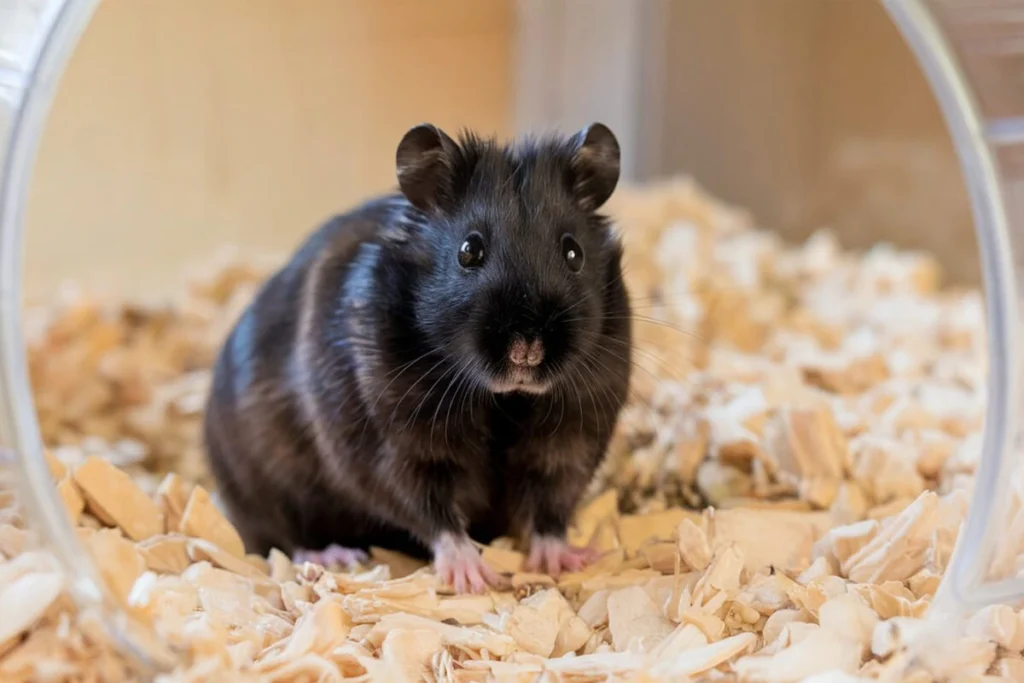
Their dark eyes add to their charm. Most black Syrian hamsters have deep, jet-black eyes that blend seamlessly with their fur, creating an intense and captivating expression. Some may have slightly lighter or reddish eyes depending on genetics, but the majority keep their striking black-on-black look. Their whiskers also tend to be darker, further enhancing their bold appearance.
Black Syrian hamsters can have either short or long fur. Short-haired black hamsters have a smooth, glossy coat, while long-haired black Syrian hamsters appear even more dramatic with flowing, dark fur. Both types maintain the same friendly personality, making them great pets for anyone who wants a hamster with a unique and eye-catching coat.
How Rare They Are Compared to Other Coat Colors
Black Syrian hamsters are much rarer than golden Syrian hamsters, which dominate the pet market. While breeders have selectively developed many different Syrian hamster coat colors over the years, solid black remains one of the less common shades. This makes them harder to find in regular pet stores, and people often need to seek out specialized breeders if they want to adopt one.
The rarity of black Syrian hamsters comes from their genetic background. Unlike golden hamsters, which carry the dominant coat color genes, black hamsters result from recessive genes that require both parents to carry the black color trait. Because of this, black hamsters don’t appear as frequently in litters, making them a special find for hamster enthusiasts.
Another reason for their rarity is that some black Syrian hamsters lighten over time, developing a slightly brown or chocolate tint, especially under bright lighting. While they still look stunning, breeders aiming for solid black coats must carefully select and breed hamsters with the strongest dark pigmentation.
Popularity Among Hamster Owners Looking for a Sleek Pet
Many hamster owners love black Syrian hamsters because they stand out from more traditional colors. Their sleek, dark fur gives them a bold and elegant look, making them a favorite among pet lovers who prefer unique hamster colors. Unlike golden hamsters, which have a classic and warm appearance, black hamsters look more exotic and rare.
Pet owners who want a hamster with a dramatic and stylish appearance often gravitate toward black Syrian hamsters. Their dark fur contrasts beautifully with bright-colored bedding and accessories, making them an aesthetically appealing choice for those who enjoy decorating their pet’s habitat. Some owners even nickname their black hamsters “mini panthers” because of their all-black coats and graceful movements.
Despite their rare color, black Syrian hamsters share the same lovable traits as any other hamster. They are just as playful, curious, and affectionate as their golden, cinnamon, or albino counterparts. Whether short-haired or long-haired, black Syrian hamsters continue to gain popularity among pet lovers who want a hamster with a sleek and sophisticated look.
Cinnamon Syrian Hamster – Warm and Charming
Description of the Cinnamon Shade and Its Soft, Warm Tone
Cinnamon Syrian hamsters have a beautiful, soft-toned coat that gives them a warm and gentle appearance. Their fur blends shades of light brown, reddish-orange, and soft beige, creating a cozy, autumn-like color. Unlike brighter or bolder hamster colors, the cinnamon shade appears muted yet rich, making these hamsters look extra soft and cuddly. Their warm, earthy tones make them stand out from classic golden hamsters, offering a unique but natural variation of Syrian hamster fur shades.
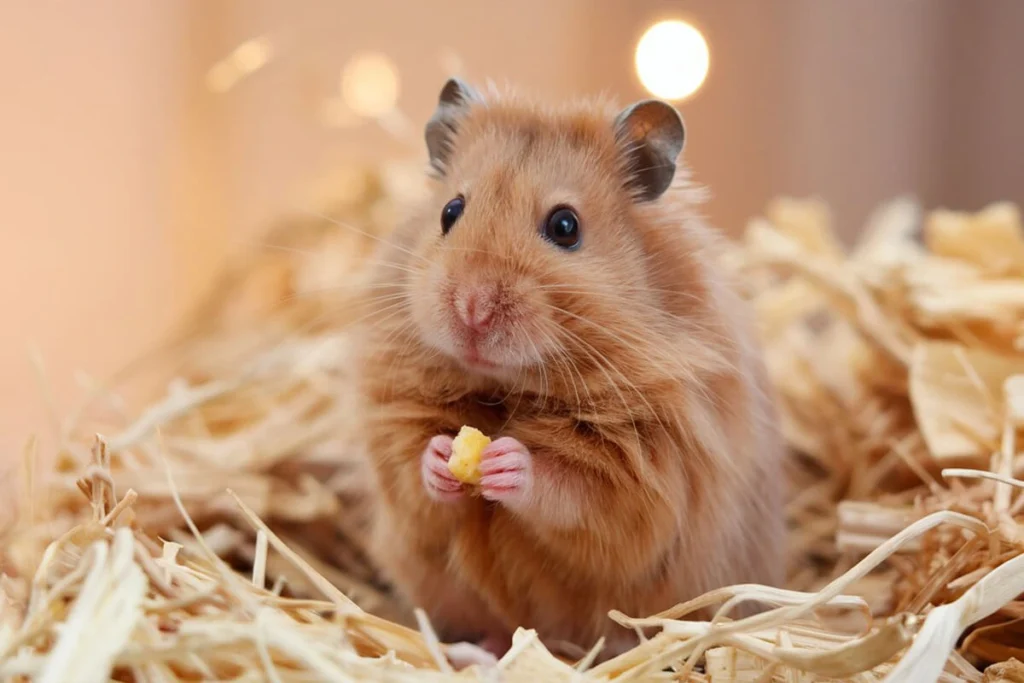
One of the most charming features of cinnamon Syrian hamsters is their eye color. Instead of the deep black eyes seen in golden or black hamsters, cinnamon hamsters have ruby-red or dark brown eyes. This subtle difference enhances their sweet and gentle expression, making them look even more adorable. Their pink ears and soft facial features add to their warm and delicate look, making them one of the most visually appealing Syrian hamster colors.
Some cinnamon Syrian hamsters may have a slightly lighter underbelly, creating a gentle contrast with the richer cinnamon tones on their back and sides. Whether short-haired or long-haired, their fur remains one of the most attractive and unique shades among Syrian hamsters.
Differences Between Cinnamon and Golden Hamsters
At first glance, some people confuse cinnamon Syrian hamsters with golden ones because both have warm-toned fur. However, their colors and features differ in several key ways.
- Coat Color: Golden Syrian hamsters have a deeper golden-orange shade on their back and a creamy white belly, while cinnamon hamsters display a softer, more blended light brown and reddish hue throughout their coat. Cinnamon hamsters lack the sharp contrast between the back and belly that golden hamsters have.
- Eye Color: Eye color provides one of the easiest ways to tell them apart. Golden hamsters have solid black eyes, while cinnamon hamsters typically have ruby-red or deep brown eyes. This unique feature gives cinnamon hamsters a softer, more delicate look.
- Markings: Many golden hamsters have dark shading around their ears, a more defined dorsal stripe, and bolder color contrasts. Cinnamon hamsters, on the other hand, have a more evenly distributed and muted coat color, without the sharp markings seen in golden hamsters.
- Rarity: Golden hamsters remain the most common Syrian hamster color, while cinnamon hamsters appear less frequently. Many pet stores carry golden hamsters, but cinnamon hamsters often come from specialty breeders, making them a rarer find.
Although cinnamon and golden Syrian hamsters share a similar warmth in their coat colors, cinnamon hamsters offer a softer and more blended fur tone, making them a charming alternative for hamster owners who want a less common but equally beautiful pet.
Why They Are Considered One of the Cutest Syrian Hamster Colors
Cinnamon Syrian hamsters look irresistibly cute because their soft fur color perfectly matches their gentle and curious personality. Their warm-toned coats make them appear extra fluffy and huggable, while their pink ears, tiny paws, and bright red or brown eyes add to their charm.
Many hamster owners find cinnamon hamsters to be one of the most photogenic Syrian hamster colors. Their light brown and reddish hues look especially stunning under soft lighting, making them stand out in photos. Their fur shade also complements different bedding and cage decorations, creating a cozy and aesthetically pleasing hamster habitat.
Cinnamon Syrian hamsters also have a naturally friendly and inquisitive nature, just like their golden counterparts. Their gentle, wide-eyed expression makes them hard to resist, and their soft, warm-toned fur gives them an extra touch of sweetness. Whether you prefer short-haired or long-haired varieties, cinnamon Syrian hamsters rank among the cutest hamster colors, capturing the hearts of pet lovers everywhere.
Albino Syrian Hamster – Pure White Beauty
Characteristics of Albino Hamsters (White Fur, Red or Pink Eyes)
Albino Syrian hamsters have a striking and rare appearance that sets them apart from other Syrian hamster colors. Their fur remains completely white, lacking any patches, markings, or color variations. Unlike other white hamsters, which may have creamy undertones or subtle patterns, true albino hamsters always display pure, snow-white coats. Their fur often appears extra soft and fluffy, making them look even more delicate and charming.
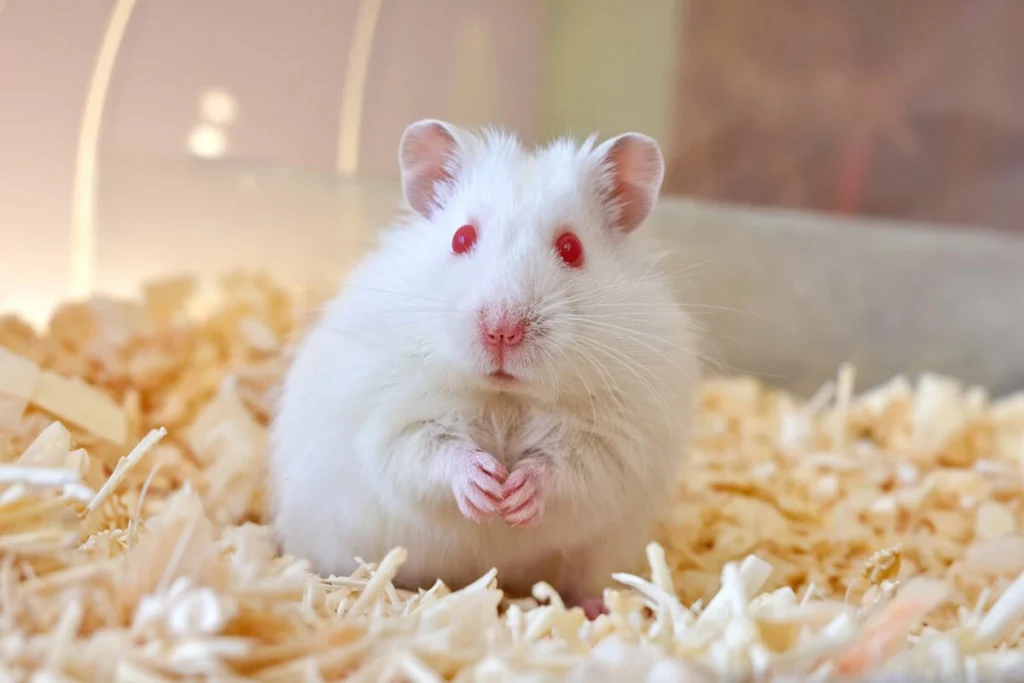
One of the most defining features of albino Syrian hamsters is their eye color. Instead of the dark black or brown eyes seen in most hamster varieties, albino hamsters have red or pink eyes due to a lack of pigmentation. Their eyes may appear a deep ruby red under certain lighting or a softer pink shade in dimmer conditions. This unique eye color results from the absence of melanin, which also causes their fur to be completely white.
Albino Syrian hamsters can have either short or long hair, depending on their genetics. Short-haired albino hamsters have a sleek, clean look, while long-haired albino hamsters, sometimes called “snowball” hamsters, appear extra fluffy and luxurious. Regardless of fur length, their pure white coats and red eyes make them one of the most fascinating and visually striking hamster color variations.
Common Confusion with White Hamsters That Are Not Albino
Many people mistake albino hamsters for white Syrian hamsters, but not all white hamsters are true albinos. While both have white fur, important differences help distinguish them:
- Eye Color: This is the most reliable way to tell them apart. True albino Syrian hamsters always have red or pink eyes, while non-albino white hamsters typically have dark brown or black eyes. If a hamster has white fur but dark eyes, it is not albino.
- Pigment in the Skin and Ears: Albino hamsters lack melanin entirely, which means their skin, ears, and noses appear pinkish due to the absence of pigmentation. White hamsters that are not albino may have darker skin, grayish ears, or even slight color shading on their faces.
- Genetic Differences: Albino hamsters inherit a specific genetic mutation that prevents their bodies from producing pigment. White hamsters, on the other hand, may carry different genetic traits that result in a white coat but do not affect their eye color or skin pigmentation.
Because of these differences, people often assume any white hamster is an albino when, in reality, true albino Syrian hamsters remain quite rare. Pet stores frequently carry white hamsters with dark eyes, but finding a true albino often requires purchasing from a breeder who specializes in unique Syrian hamster coat colors.
Special Considerations for Caring for an Albino Syrian Hamster
Albino Syrian hamsters require a few extra considerations to keep them healthy and comfortable. Their lack of pigmentation makes them more sensitive to bright light, so owners should take extra care when setting up their enclosure and handling them.
- Protecting Their Eyes from Bright Light: Albino hamsters can struggle with bright lights due to their red or pink eyes. Their eyes lack melanin, which normally helps filter light, so excessive exposure can cause discomfort. Owners should avoid placing their cages in direct sunlight or under harsh artificial lighting. Instead, they should provide a dim, cozy environment where the hamster can feel safe and comfortable.
- Choosing the Right Bedding and Cage Setup: Since albino hamsters have pale skin, they may be slightly more prone to irritation from rough bedding materials. Soft, dust-free bedding, such as paper-based or aspen shavings, helps prevent skin irritation and keeps their enclosure comfortable. Providing plenty of hiding spots, tunnels, and cozy nesting areas helps them feel secure, especially since their vision may be more sensitive than other hamsters.
- Handling with Care: Albino hamsters may have slightly poorer eyesight than other Syrian hamster colors, so they might rely more on their sense of smell and hearing. When approaching an albino hamster, owners should use a gentle voice and avoid sudden movements. Letting the hamster recognize their scent before picking them up helps build trust and prevents unnecessary stress.
- Monitoring for Health Issues: Albino hamsters remain just as healthy and active as any other Syrian hamster color, but their lack of pigmentation may make them slightly more prone to eye-related issues. Owners should check their hamster’s eyes regularly for signs of irritation, excessive tearing, or sensitivity. Keeping their cage clean and free from dust helps reduce the risk of eye discomfort or respiratory issues.
Albino Syrian hamsters may require a little extra attention to their environment and care, but their unique beauty and gentle nature make them incredibly rewarding pets. Their snow-white fur and bright red or pink eyes give them an unforgettable appearance, making them one of the most fascinating and sought-after Syrian hamster colors.
Satin Syrian Hamster – A Shiny and Luxurious Coat
Explanation of the Satin Gene and Its Effect on Hamster Fur
The satin gene plays a fascinating role in determining the texture and appearance of a Syrian hamster’s coat. Unlike other hamster color variations, which primarily focus on fur shade, the satin gene influences the sheen and texture of the fur, creating a glossy, almost silky effect. Hamsters with this gene have fur that appears shinier and more reflective than regular-coated hamsters.
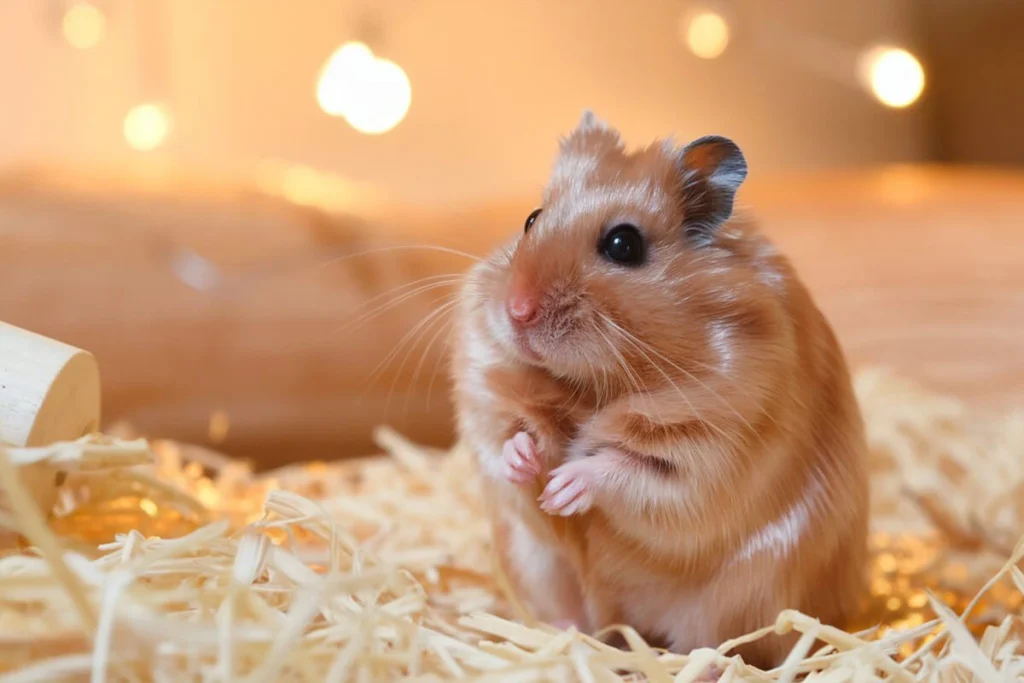
The satin effect occurs because the hair strands themselves are slightly hollow, allowing light to pass through and creating an illusion of extra shine. This gene enhances the richness and depth of any Syrian hamster coat color, giving it a more vibrant and lustrous appearance. The satin sheen is most noticeable under bright light, where the hamster’s fur appears to shimmer with a sleek and luxurious glow.
Some satin Syrian hamsters display a light, almost translucent effect in certain areas, particularly on their bellies and sides. The way their fur catches and reflects light makes them look exceptionally unique, turning even common Syrian hamster colors into something more eye-catching. Whether short-haired or long-haired, the satin gene adds a striking beauty to any hamster’s coat, making them highly sought after by pet lovers.
How Satin Syrian Hamsters Can Come in Various Colors
One of the most exciting things about satin Syrian hamsters is that the satin gene doesn’t limit them to one specific color. Unlike some coat patterns that only appear in select hamster varieties, the satin gene can enhance any Syrian hamster color, from golden to black, cinnamon, albino, and even rare shades like lilac or dove.
Because the satin effect applies to the fur’s texture rather than its pigmentation, satin hamsters display a dazzling shine regardless of their base color. For example:
- Satin Golden Syrian Hamsters – Their classic golden fur takes on a radiant, sunlit glow, making them look even more vibrant than regular golden hamsters.
- Satin Black Syrian Hamsters – The deep black coat appears even sleeker and more polished, giving them a velvety, luxurious look.
- Satin Cinnamon Syrian Hamsters – Their soft, warm-toned fur shines beautifully, creating a glowing, rich caramel effect.
- Satin Albino Syrian Hamsters – Their pure white fur looks extra smooth and glossy, resembling a soft, shimmering snowball.
The satin gene can also be combined with long-haired Syrian hamsters, creating an even more dramatic and flowing appearance. Long-haired satin hamsters have an extra silky texture, with their fur appearing slightly wavy or feathery due to the enhanced sheen.
However, when two satin hamsters are bred together, the offspring may develop an overly thin or sparse coat due to the intensification of the satin gene. Responsible breeders avoid breeding two satin hamsters together to maintain the perfect balance of shine and fur thickness.
Why Their Glossy Coat Makes Them a Unique and Stunning Pet
Satin Syrian hamsters stand out among other hamster colors due to their distinctively glossy coats. Their shimmering fur creates a dazzling effect that catches the eye, making them one of the most visually impressive Syrian hamster varieties. The satin sheen enhances their natural beauty, turning even the most common hamster colors into something extraordinary.
Pet owners often find satin hamsters mesmerizing because their coats seem to change in appearance under different lighting. Depending on the angle and intensity of the light, their fur can look brighter, deeper, or even slightly iridescent. This unique quality gives satin hamsters a more elegant and refined look compared to standard-coated Syrian hamsters.
Beyond their striking appearance, satin Syrian hamsters remain just as friendly, curious, and playful as any other Syrian hamster. Their luxurious fur, combined with their charming personalities, makes them a favorite among hamster enthusiasts who want a pet that looks as stunning as it is affectionate. Whether short-haired or long-haired, a satin Syrian hamster brings a touch of elegance to any pet owner’s home, making them one of the most dazzling and unique hamster varieties available.
Conclusion
Syrian hamsters come in a stunning variety of colors, each with its own unique charm and appeal. From the classic golden hamster, with its warm and traditional hues, to the rare and striking black Syrian hamster, every coat color brings something special to the world of pet hamsters. The soft cinnamon shade offers a cozy, autumn-like beauty, while albino hamsters stand out with their pure white fur and captivating red or pink eyes. Satin Syrian hamsters add even more uniqueness to the mix with their glossy, shimmering coats that enhance any color variation.
No matter which color captures your heart, Syrian hamsters make wonderful pets with their playful, affectionate, and curious personalities. Their fur color may influence their appearance, but it doesn’t change their loving nature and fun behaviors. Whether you prefer a sleek black hamster, a fluffy cinnamon one, or a dazzling satin-coated pet, each Syrian hamster brings joy and companionship to its owner.
When choosing a hamster, consider not only its color but also its personality and care needs. Some colors, like albino or satin hamsters, may require a little extra attention due to light sensitivity or coat texture, but all Syrian hamsters thrive in a loving, well-maintained environment.
With so many beautiful Syrian hamster colors to choose from, finding the perfect pet becomes an exciting and rewarding experience. No matter which shade you pick, your furry friend will bring endless delight and charm to your home.
Read More About the Syrian Hamster Here.
Find The Best Name For your Lovely Hamster from our Top 100 Names HERE!
Read More about Furry Pets From HERE!
Find Good stuff for your Tiny Pets On Pet MD Official
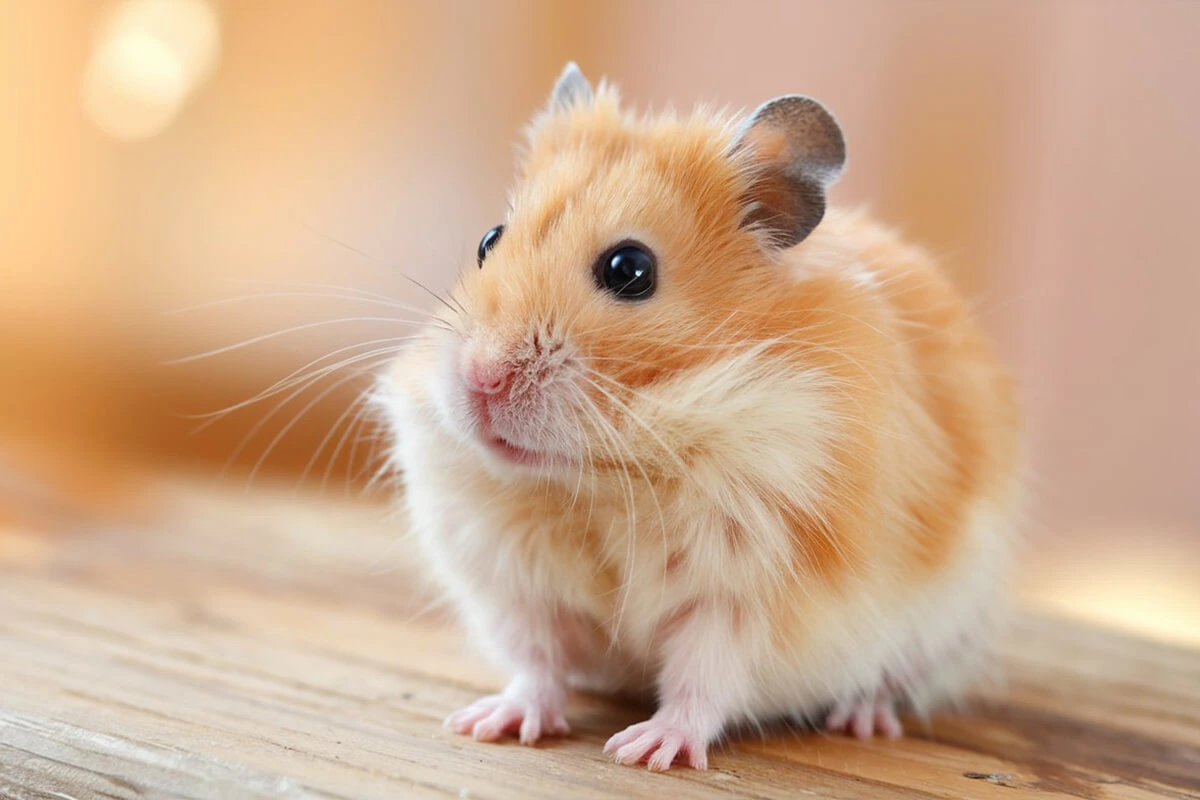
1 thought on “5 Best Syrian Hamster Colors: Adorable Pets You Need to See”
Comments are closed.